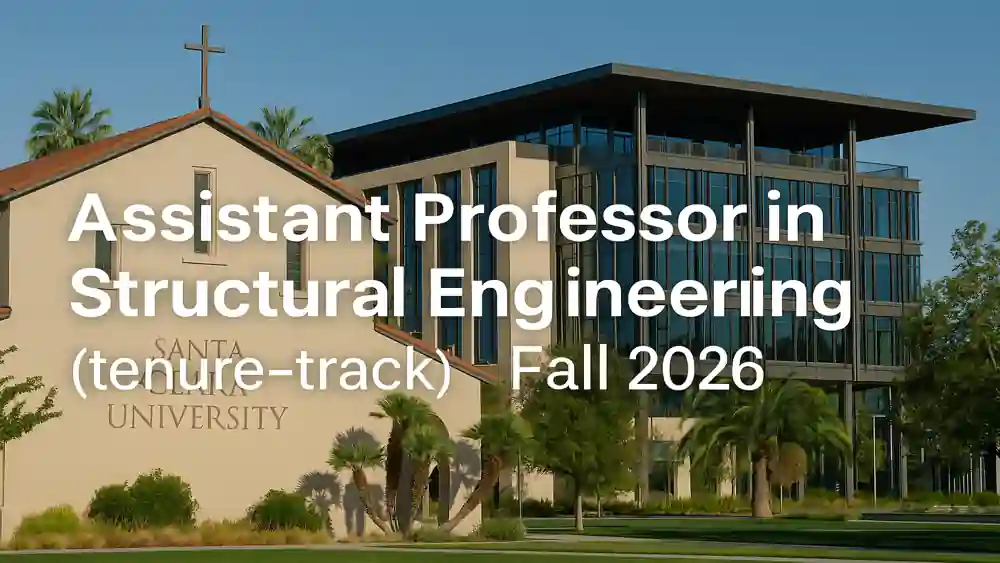Qatar University (QU), the country’s national university, operates several funding mechanisms to attract talented students and early-career researchers. In this in-depth guide, you will find a structured overview of the scholarship landscape, graduate assistantships, and postdoctoral opportunities—together with selection insights, application tips, and reliable places to track the latest calls. For authoritative, current details on scholarship categories, timelines, and eligibility, consult the official scholarships portal.
Qatar University provides multiple funded routes for outstanding learners and researchers. From competitive scholarships to graduate assistantships and focused postdoctoral roles, candidates can align academic goals with structured financial support. This thoroughly rewritten guide explains each pathway, the typical coverage, and practical steps to apply—clearly, concisely, and professionally.
1) Scholarship Landscape at Qatar University
QU maintains a centralized scholarships portal that lists awards for new and continuing students across competitive, non-competitive, and other categories. These programs primarily reward merit; however, they also balance institutional priorities such as strategic disciplines and national development needs. As a result, applicants benefit from transparent criteria and predictable application windows.
Competitive vs. Non-Competitive Awards
Competitive scholarships emphasize strong academic records, persuasive statements, and robust evidence of achievement. Consequently, applicants should prepare polished transcripts, concise motivation letters, and references that demonstrate sustained performance.
style="text-align: justify;">
Non-competitive scholarships, meanwhile, operate under predefined eligibility conditions—such as program, college, or residency parameters. Because these awards often carry clear, published requirements, a careful self-check against each criterion will save time and reduce the risk of incomplete submissions.
Navigating the Portal Efficiently
To move efficiently, filter by program or college, then review coverage (tuition, stipend, housing where applicable) and any service obligations. Next, note the required documents and align them with the submission sequence specified on the portal. Finally, set calendar reminders for opening and closing dates so you do not miss the window.
2) Graduate Scholarships (Master’s and PhD)
Graduate scholarships at QU combine tuition support with, in some instances, monthly stipends calibrated to merit and departmental needs. Because each scholarship track can specify distinct GPA thresholds, admission conditions, or documentation, applicants should read every requirement attentively and prepare a complete, verifiable dossier.
Typical Eligibility and Documents
Although details vary by award, you can expect to submit:
-
-
Official transcripts and degree certificates.
-
Proof of admission or an offer to the program.
-
A valid ID and, where relevant, proof of residency or nationality.
-
Program-specific forms (for example, language proficiency or professional licenses).
Practical Tips to Strengthen a Graduate Application
Break longer narratives into precise, evidence-based statements. For instance, quantify outcomes—papers accepted,
datasets curated, prototypes built, or patents filed. Additionally, ensure your research interests align with your intended supervisor’s agenda and the college’s strategic priorities. Lastly, proofread to keep tone formal and content consistent across all documents.
3) Graduate Assistantships (Teaching & Research)
Beyond scholarships, QU offers Graduate Assistantships (GAs) that combine structured academic duties with stipends. This pathway suits candidates who want classroom or laboratory exposure while completing graduate study. Because GA positions are finite and centrally managed, they remain competitive and policy-driven.
How GA Positions Work
-
-
Who can apply: New or current QU graduate students who are not otherwise employed.
-
What you do: Assist with lectures, laboratories, demonstrations, grading, or research tasks. Departments assign duties based on current instructional needs and project priorities.
-
How selection proceeds: Departments recommend qualified students; a central review confirms compliance with policy and documentation. Appointments are formalized for a defined term.
Setting Expectations and Workflows
Clarify workload, supervision, and deliverables before you accept an offer. Additionally, request a brief orientation on grading rubrics, lab safety, and data handling. Maintain a simple weekly log of tasks, because accurate records help both evaluation
and time management throughout the semester.
4) Postdoctoral Opportunities at QU
Postdoctoral fellowships at QU typically appear in two forms and serve complementary goals—advancing strategic research and building early-career capacity.
Institutional Postdoctoral Positions
University units and research centers periodically advertise fixed-term postdoctoral roles (commonly 12–24 months). These calls align with priority themes—such as energy, environment, health, materials, cybersecurity, or AI—and specify deliverables like publications, datasets, or prototypes. Therefore, applicants should tailor research statements directly to the advertised methods and milestones.
Postdoctoral Research Fellowship (PRF) Mechanism
QU also supports an internal postdoctoral research fellowship mechanism intended to accelerate applied research and nurture local talent. Typically, eligibility favors recent PhD graduates who can demonstrate fit with national priorities and who can deliver concrete outputs within the fellowship period. Approval follows a formal policy and depends on supervisor commitment, facilities, and budgets.
Strengthening a Postdoc Application
Lead with a tightly scoped, feasible project plan. Then link proposed methods to available instruments or datasets. Finally, add a timeline for manuscripts, conference submissions, and software or data releases to show momentum and accountability.
5) External Research Funding that Supports Fellows at QU
Because
QU faculties and centers execute externally funded projects,
national research grants often create roles for research assistants, graduate researchers, and postdoctoral fellows. These positions, posted on unit pages or project sites, usually include precise technical prerequisites and clear deliverables. Therefore, align your competencies with the project’s methods—statistics packages, instrumentation, field protocols, or modeling stacks—to stand out.
Coordinating with Supervisors and Labs
When you explore a lab, ask about active or pending grants and the likelihood of funded openings. Moreover, request a reading list to understand the group’s technical trajectory. With this context, you can propose a concise contribution—an algorithmic improvement, a validation dataset, or an experiment—demonstrating initiative and fit.
6) Other Pathways Connected to Qatar (For Context)
In parallel to QU’s internal schemes, national and regional partners operate scholarship initiatives that sometimes intersect with Doha-based universities. While these are not QU-exclusive, residents or long-term students may find additional routes to degree funding. Always verify current partner institutions, eligibility rules, and renewal conditions before applying.
Integrating External Schemes with QU Study Plans
If you plan to combine an external award with QU enrollment, coordinate early with the target college. Confirm how tuition, stipends, and any service obligations interact. Then document approvals in writing so responsibilities remain clear throughout your program.
7) What Each Route Typically Covers
Coverage and benefits differ across programs and cycles. Nonetheless, this summary helps you set expectations before you commit.
Scholarships
Most scholarships cover full or partial tuition; some add monthly stipends, accommodation options, or health-related benefits depending on the college and award. Because offerings can change, verify the year’s coverage on the official page before you accept.
Graduate Assistantships
GA appointments provide a stipend in exchange for teaching and/or research tasks. Terms reflect policy and college guidelines—often including maximum weekly hours, role descriptions, and performance reviews.
Postdoctoral Posts
Institutional postdoc roles normally specify a salary package and benefits over a 12–24 month term. Deliverables are explicit and time-bounded—publications, prototypes, or submissions to high-impact venues—so project management discipline is essential.
8) How to Choose the Right Option
Match your goal to the mechanism:
-
-
Seeking tuition support with clear merit criteria? Start with the scholarships portal and filter by program or college.
-
Seeking funding plus experience? Target graduate assistantships to build practical teaching or research skills while you study.
-
Seeking full-time research after the PhD? Monitor postdoctoral calls and align a focused proposal with the host lab’s agenda.
Decision Aids and Self-Checks
List your constraints (timeline, supervisor access, method expertise) and score each option against them. Additionally, map your outputs—papers, datasets, software—to each mechanism’s expectations. This exercise clarifies the best fit and sharpens your application narrative.
9) Application Tips (Actionable and Time-Saving)
-
-
Start early. Admissions and funding windows are finite; assemble transcripts, test scores, and letters ahead of time.
-
Tailor your dossier. Align CV and statement with the department’s active themes; cite concrete outputs and roles.
-
Use official checklists. Missing documents delay or void reviews; follow the sequence specified by the program.
-
Track grants. Ask supervisors about current awards and forthcoming posts for assistants or postdocs.
-
Confirm coverage. Verify tuition, stipend, housing, health, and renewal rules before you accept any offer.
Formatting and Submission Hygiene
Name files consistently, compress PDFs without losing legibility, and paginate multi-document submissions. Furthermore, keep a simple “evidence index” mapping each claim—publications, awards, teaching—to the corresponding document page number.
10) Where to Find the Latest Calls
-
-
QU Scholarships Portal. Use filters to locate opportunities by program or college and track open/close dates.
-
Office of Graduate Studies & Colleges. Review GA pages for rules, duties, and appointment processes.
-
Research Centers & College Pages. Watch for time-bound postdoctoral calls aligned with strategic themes.
-
Unit Newsletters & Announcements. Subscribe where available to receive alerts directly in your inbox.
Keeping Information Fresh
Because cycles shift, schedule a quarterly personal review of relevant pages. Moreover, maintain a one-page summary of links, deadlines, and contact points so you can react quickly when a call opens.
Feature Table
| Feature |
Details |
| Program Name |
Fellowships at Qatar University (Scholarships, Graduate Assistantships, Postdoctoral Opportunities) |
| Host Country |
Qatar |
| Funded By |
Qatar University (and externally funded research projects where applicable) |
| Duration |
Varies by scheme; scholarships align with program length; postdocs often 12–24 months |
| Study Mode |
Full-time on-campus (assistantships and postdocs); scholarships follow program modality |
| Eligibility |
Based on scheme-specific criteria: academic merit, program admission, policy compliance, and documented achievements |
| Financial Support |
Tuition coverage (full/partial), stipends, and benefits depending on scheme and college policies |
| Fields of Study |
Broad range across QU colleges; priority areas reflected in postdoctoral calls and strategic projects |
| Deadline |
Varies by cycle and scheme; see official portal |
| Official Website |
Fellowships at Qatar University |
Next Cycle (Indicative Planning)
Historically, scholarship and assistantship windows cluster around September–October and January–February, while postdoctoral calls open throughout the year based on project needs. To stay ahead, prepare documents by August and monitor official pages monthly; we will update soon as new dates are confirmed.
Conclusion
Qatar University’s funding ecosystem is intentionally diversified: scholarships anchor access to advanced study, graduate assistantships develop instructional and research skills during enrollment, and postdoctoral opportunities consolidate expertise in priority fields. To act decisively, confirm scheme-specific rules and timelines on official channels, then tailor your materials to the unit’s goals before submission. For authoritative requirements and live updates, start at the official scholarships portal.
Frequently Asked Questions
What fellowships does Qatar University offer for international students? Qatar University offers competitive scholarships, graduate assistantships, and project-based postdoctoral fellowships. Moreover, eligibility and coverage vary by college and funding stream.
How do I apply for Qatar University graduate scholarships? First create your account on the official portal, then submit transcripts, program offer, and required forms. Finally, track deadlines and confirmations carefully.
Do Qatar University graduate assistantships include tuition waivers? Graduate assistantships typically provide stipends for teaching or research duties. However, tuition coverage depends on the separate scholarship you hold.
What documents strengthen a Qatar University fellowship application? Provide verified transcripts, offer letter, ID, publications list, experience certificates, and a concise statement of purpose. Additionally, align research interests with college priorities.
Are Qatar University postdoctoral fellowships open year-round? Postdoctoral calls appear intermittently through colleges and centers. Therefore, monitor research pages frequently and prepare a focused, feasible proposal.
What GPA do I need for Qatar University scholarships? Minimum GPAs differ by scholarship and college. Consequently, check the scheme’s criteria and ensure your transcript matches the threshold.
Can working professionals hold a Qatar University graduate assistantship? Generally, assistantships require students not be otherwise employed. Still, confirm policy details with the Office of Graduate Studies.
Which fields get priority in Qatar University postdoctoral hiring? Priority often includes energy, environment, health, materials, cybersecurity, and AI. Yet, review each call’s methods and deliverables.
How competitive are Qatar University scholarships and assistantships? They remain highly competitive. Therefore, submit polished documents, quantify achievements, and tailor your application to program needs.
When should I prepare for the next Qatar University application cycle? Begin document prep several months before expected intakes. Then update materials quarterly and watch official pages for new calls.
Premium Mentorship for a Stronger Application
- Premium Mentorship: personalised 1:1 guidance for this and similar opportunities
- In-depth review of your CV, academic profile, and key statements
- Aligned with international selection criteria so your profile matches what panels expect
- Stronger, more compelling narrative for highly competitive calls
- Step-by-step support from opportunity mapping to final submission (fee-based)
Subscribe Premium Mentorship










